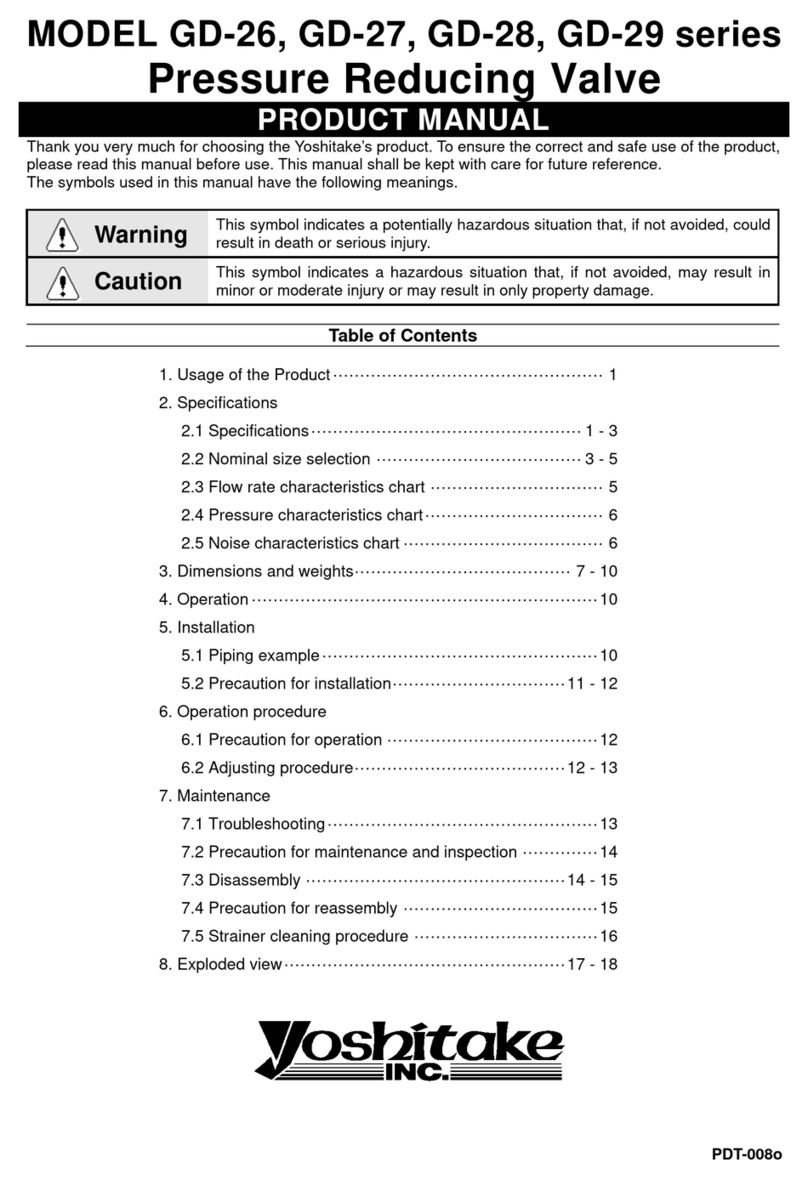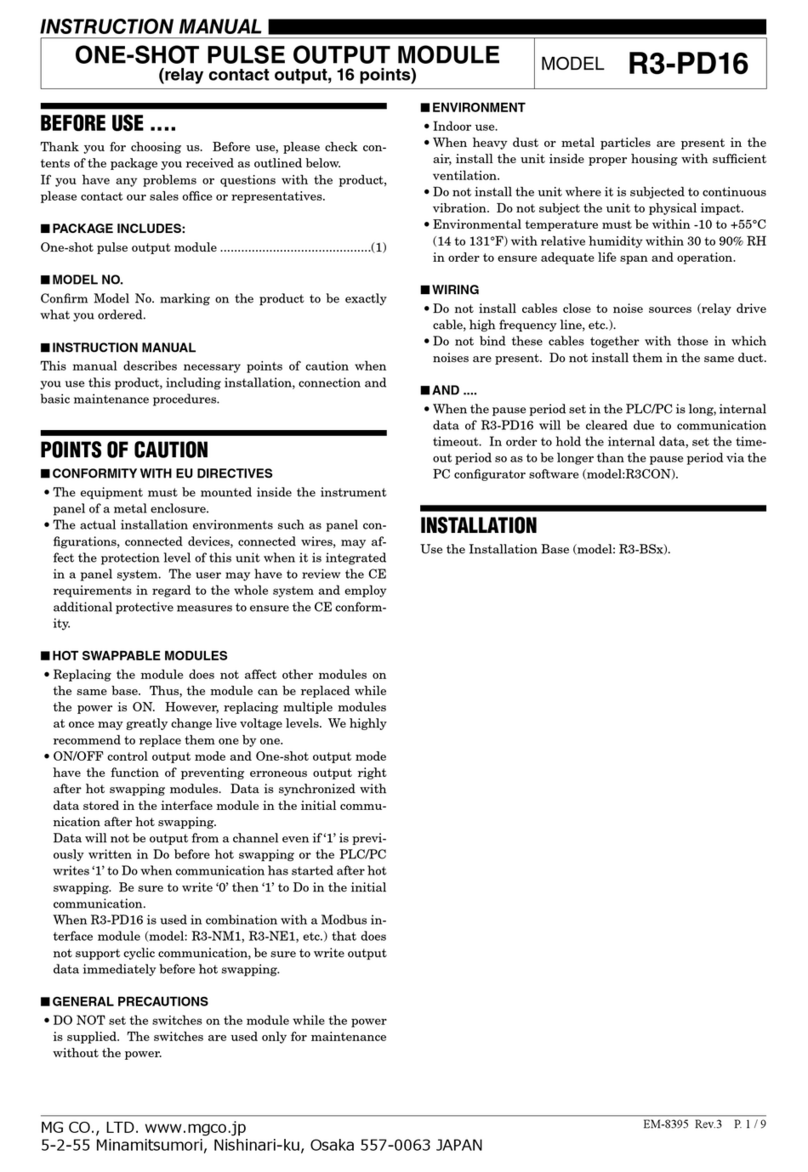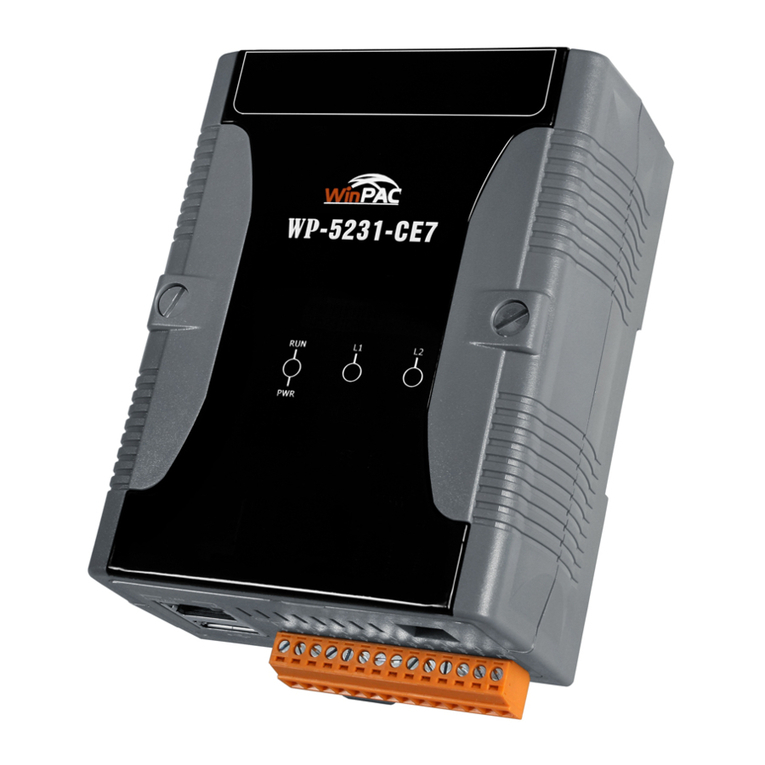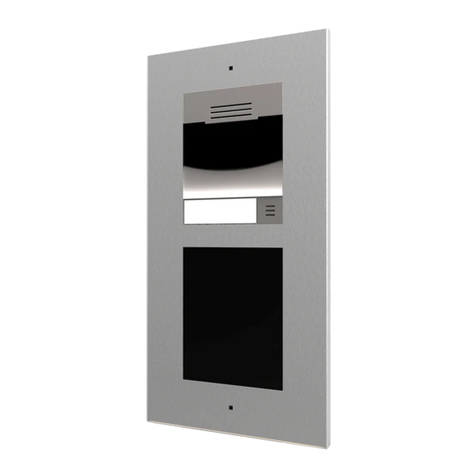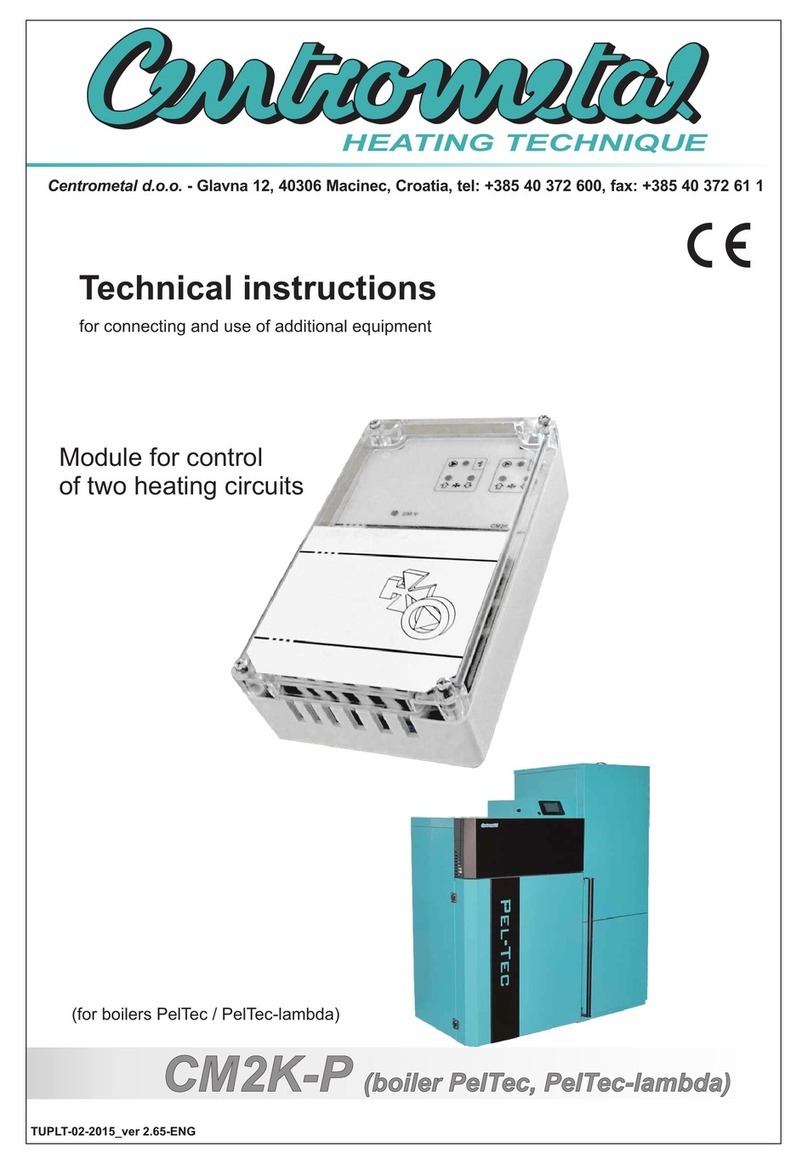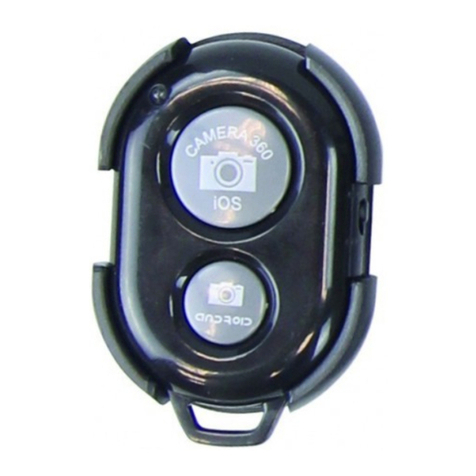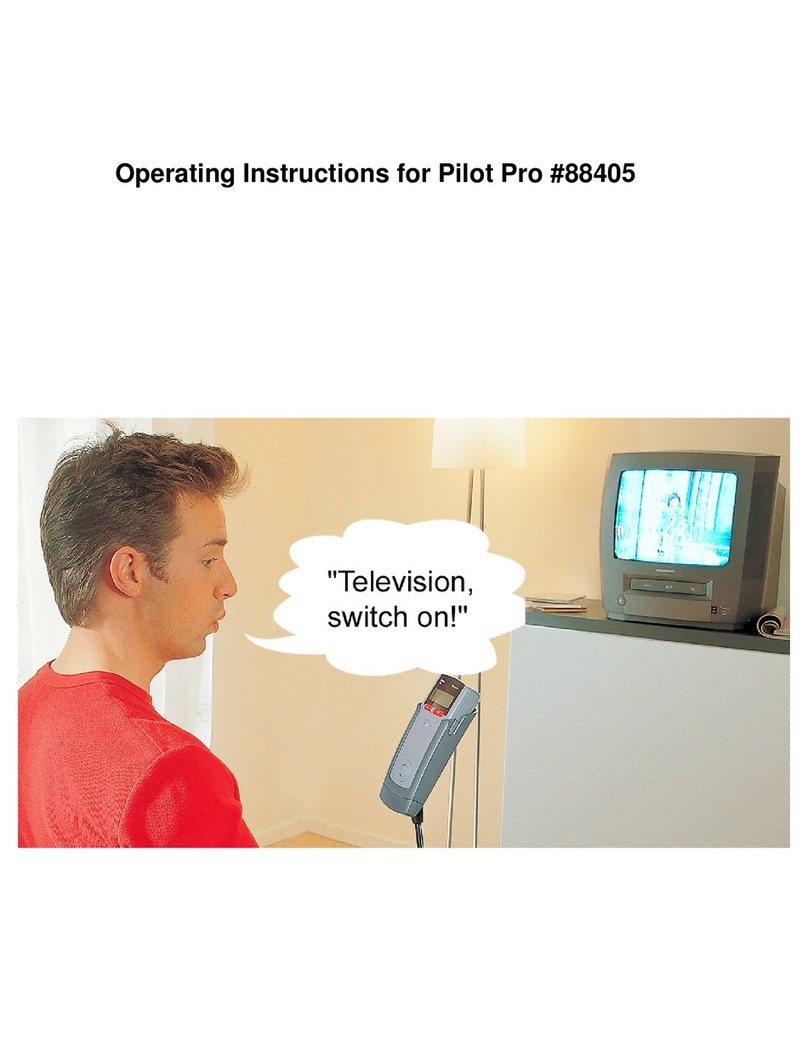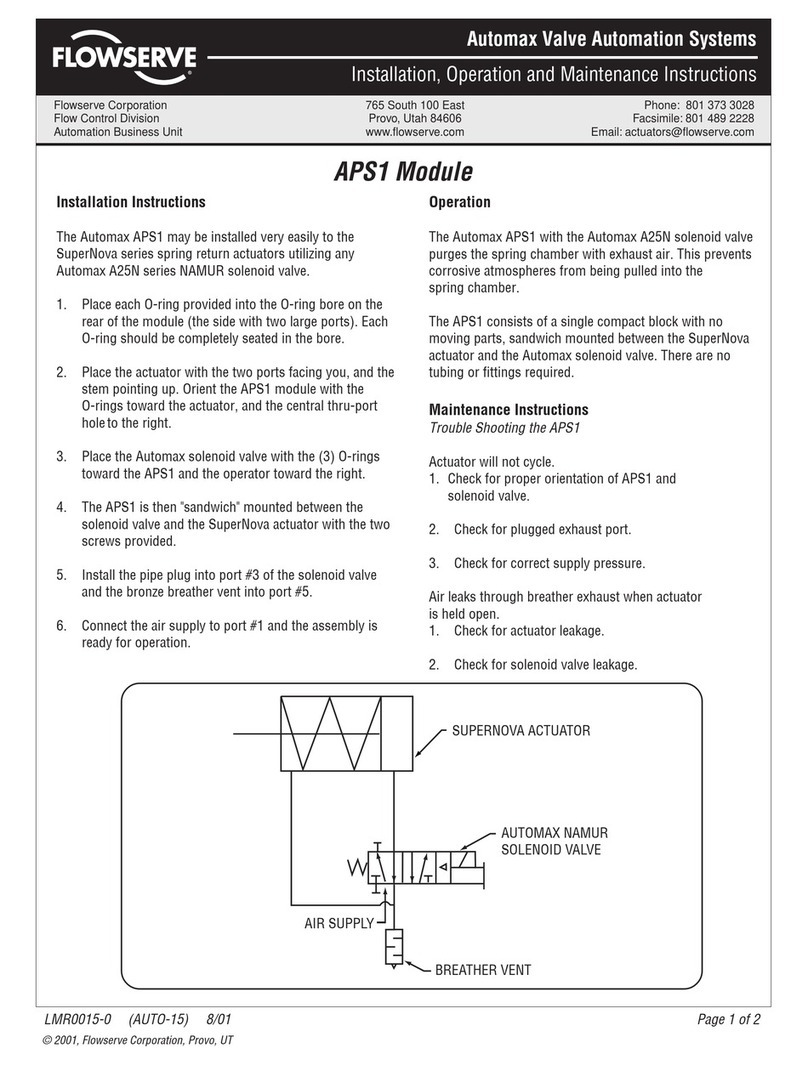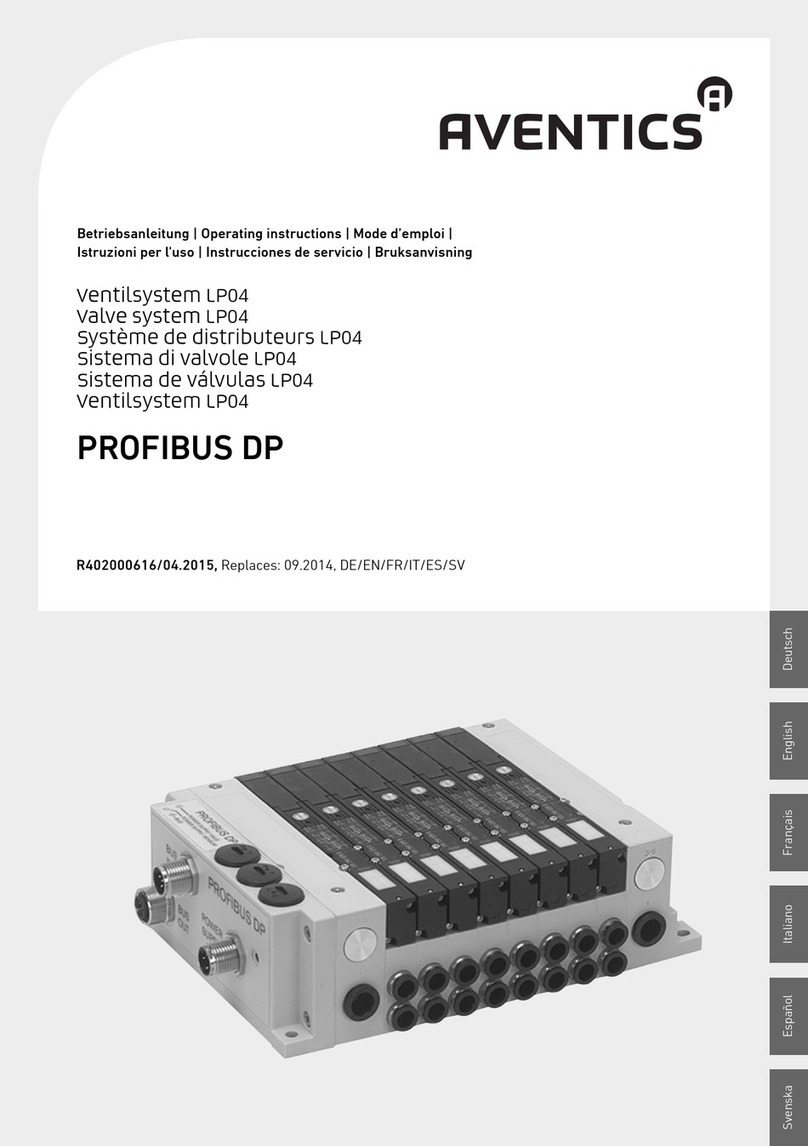Ewert Energy Systems Orion Jr. 2 BMS User manual

Wiring & Installation Manual
Revision 3.3
The Orion Jr. 2 BMS by Ewert Energy Systems is designed to manage and protect Lithium ion
battery packs and is suitable for use in stationary energy storage and small mobile applications such as
golf carts and material handling equipment.

Orion Jr. 2 BMS Wiring Manual
2
Table of Contents
SAFETY: READ THIS FIRST ................................................................................................................ 4
Determining which BMS to order........................................................................................................ 7
Overview of Theory of Operation........................................................................................................ 8
Mounting .............................................................................................................................................. 9
Physical Mounting ....................................................................................................................................................................9
Thermal Information .................................................................................................................................................................9
Wiring the BMS .................................................................................................................................. 10
Interfacing the Load and Charger with the BMS.............................................................................. 11
Current Limiting via the digital CANBUS (CAN-enabled units only) .......................................................................................11
Current limiting via the analog voltage outputs.......................................................................................................................12
Current limiting via an on/off signal from the BMS..................................................................................................................12
Notes for specific applications................................................................................................................................................12
Digital RS232 Serial Communication ............................................................................................... 13
Straight Through Pinout .........................................................................................................................................................13
Mating Connector Part Numbers ............................................................................................................................................13
Main Input/Output (I/O) Connector ................................................................................................... 14
Wiring Main Connector...................................................................................................................... 16
Fusing ....................................................................................................................................................................................16
Power Supplies ......................................................................................................................................................................16
LED Status Light ....................................................................................................................................................................18
Wiring CAN interfaces ............................................................................................................................................................18
Wiring digital signal outputs....................................................................................................................................................19
Checking open drain outputs..................................................................................................................................................23
Wiring the multipurpose input.................................................................................................................................................23
Wiring the analog 0-5V outputs ..............................................................................................................................................23
Thermistors (Pins 10, 12, 16, and 8) ......................................................................................................................................24
Wiring Voltage Taps........................................................................................................................... 25
Safety Disconnects and Fuse Position ...................................................................................................................................28
Current Sensor.......................................................................................................................................................................29
Wiring for high impedance cables and busbars......................................................................................................................30
Skin effect issues due to AC currents.....................................................................................................................................32
Transients...............................................................................................................................................................................33
Wiring Errors ..........................................................................................................................................................................34
Voltage tap harness lengths ...................................................................................................................................................34
Internal Isolation .....................................................................................................................................................................35
Fuses on voltage tap wires.....................................................................................................................................................35
Physical routing and installation of wires................................................................................................................................35
Verifying Cell Voltage Tap Wiring...................................................................................................... 36

Orion Jr. 2 BMS Wiring Manual
3
Why Orion Jr. 2 BMS Internal Fuses Blow ....................................................................................... 37
What causes the fuses to blow?.............................................................................................................................................37
Reason: Altering wiring with the BMS connected (or loose busbar) .......................................................................................38
Reason: Cell tap wires reversed.............................................................................................................................................40
Reason: Accidental contact to cell tap....................................................................................................................................41
Reason: Transients (and shorts within the high voltage battery pack)....................................................................................41
Reason: Extremely weak cell, internal cell failure (fairly rare) ................................................................................................42
Fuses in the Orion Jr. 2 BMS .................................................................................................................................................42

Orion Jr. 2 BMS Wiring Manual
4
SAFETY: READ THIS FIRST
Important things to read first that will save you time and possibly a battery pack or BMS.
This product is designed to be integrated into an application. Integration must be performed by a
qualified person trained in electrical engineering and familiar with the characteristics and safety
requirements of lithium batteries. Proper integration, selection of components, wire selection,
installation, routing of cables and interconnects, and the determination of the suitability of this product
for the application are fully the responsibility of the integrator. Do not use this product if you are unsure
if you have the necessary skills to complete this integration.
1.) The BMS must have a means of controlling and shutting off any connected charger, load,
source or any other means of charge and discharge. At least two shutoff mechanisms should be
present to turn off a charger. The charge safety signal is designed to be used as an emergency backup
if a digital CAN control or digital charge enable signal fails. If the charger does not support an analog
shutoff, an AC relay can be used in series with the charger power supply. This is the last line of defense
if a failure occurs and should not be omitted. In addition to the above safety, the battery charger should
be programmed such that it does not exceed the maximum pack voltage if a failure occurs.
2.) The voltage tap connectors must be DISCONNECTED from the BMS while any battery wiring
is being modified for personal safety and to prevent damage. Wiring while connected to the BMS
may pose a personal safety hazard and/or fire risk since the remaining wires within the cell group can
become electrically ‘hot’ due to internal protection diodes. Additionally, wiring with the BMS connected
significantly increases the risk of damage to the BMS. Damage to the BMS from mis-wiring,
misuse, or altering battery wiring while the BMS is connected is not covered under warranty and may
pose a personal safety and/or fire risk. Immediately disconnect the BMS from the battery if the
BMS is damaged.
3.) Always verify voltage taps and current sensor wires are wired correctly before plugging them
into the Orion Jr. 2 Failure to do so may result in damage to the BMS. Damage to the BMS from mis-
wiring or misuse is not covered under warranty, and some incorrect wiring may pose a personal
safety risk or fire risk from energy from the battery pack. Please see the section “Verifying Cell Voltage
Tap Wiring” for methods of testing to ensure the voltage taps are wired properly. Immediately
disconnect the BMS from cells if it is incorrectly wired. Leaving the BMS connected to cells when
incorrectly wired may drain incorrectly wired cells, even when the unit is turned off which may
permanently damage connected cells.
4.) All battery packs must be protected from over-current with a suitable current limiting device such as
a fuse. If a fuse or safety disconnect is positioned between the first and last cell of a battery
pack, they must be wired in certain ways. If you are using a fuse or safety disconnect between the
first and last cell, it is critical to read the entire section on Safety Disconnects and Fuse Positions
before wiring the BMS. Failure to comply may result in catastrophic failure of the BMS from full
stack potential present across two adjacent cell taps if a fuse blows or if the safety disconnect
is removed. Read the full wiring manual before wiring the BMS, especially the cell tap

Orion Jr. 2 BMS Wiring Manual
5
harnesses.
5.) Make sure that all cells are connected to the BMS and that all current is measured by the current
sensor. It is the user’s responsibility to ensure the BMS is connected to all cells to verify the
BMS has a method to limit current in and out of the pack and to determine and supply the
correct programming parameters (such as maximum cell voltage, minimum cell voltage,
maximum temperature, etc.)
6.) While every effort is made to ensure that the Orion Jr. 2 operates properly under all conditions, it is
the integrator’s responsibility to integrate properly into the application such that any failure is a safe
failure. For more information, please read “Failure Modes” in the operational manual. The integrator is
responsible for the determination of suitability of wire, wiring methods, interconnects, and complying
with any regulations, standards, or codes. The Orion Jr. 2 is not to be used for life support
systems, medical applications or other applications where a failure could cause damage to
property or cause bodily harm or death.
7.) Paralleling separate strings of li-ion batteries together requires special considerations and a method
to isolate each string from each other. One Orion Jr. 2 BMS per parallel string is required. The Orion Jr.
2 BMS may not be used with parallel string configurations unless specific external safety
systems are provided. Engineering work by a qualified electrical engineer is required for use
with parallel strings. If you are using the Orion Jr. 2 in a parallel string setup, please see the section
about parallel strings (Note: this is different from paralleling cells inside of a single string which is very
common and can be done with a single BMS.)
8.) Because the Orion Jr. 2 BMS is connected to a high voltage battery pack, hazardous voltages and
hazardous energies may be present inside the unit. There are no user serviceable parts inside the unit
and opening the enclosure or user attempted repairs will void the warranty. Users should never
attempt to repair an Orion Jr. 2 BMS unit. Further, a damaged unit or a unit repaired without
authorization may pose additional safety risks. DAMAGED UNITS SHOULD BE IMMEDIATELY
DISCONNECTED FROM ALL POWER INCLUDING THE BATTERY PACK AND REMOVED FROM
SERVICE. NEVER CONTINUE TO USE A DAMAGED BMS UNIT. Please contact the factory or your
local distributor for repair options. Ewert Energy is not liable for damage caused by user attempted
repairs or continued use of a damaged BMS unit.
9.) The Orion Jr. 2 unit is rated for working voltages not to exceed 60 volts DC (48 VDC nominal). The
Orion Jr. 2 BMS may not be used if the voltage between any two points in the battery pack or the
voltage between any 2 pins on the BMS will exceed 60 VDC at any point in time. Orion Jr. 2 units
may not be used in series to obtain pack voltages above the 60V maximum. For applications
requiring working voltages above 60 VDC, please consider our standard Orion 2 BMS.

Orion Jr. 2 BMS Wiring Manual
7
Determining which BMS to order
The Orion Jr. 2 BMS is available off the shelf in two configurations – with CANBUS and without
CANBUS. Both standard configurations support 1 to 16 cells. In larger volumes, customized versions of
the Orion Jr. 2 unit are available for cost savings including units supporting fewer cells.
Included with the Jr. 2 BMS
●Main BMS unit
Optional
●CANBUS support
●Hall-effect current sensor options
●Pre-assembled wiring harnesses
●Basic displays, data loggers, and PC interfaces are also options
See “Orion Jr. 2 Purchasing Guide” for details on ordering options

Orion Jr. 2 BMS Wiring Manual
8
Overview of Theory of Operation
The Orion Jr. 2 protects and monitors a battery pack by monitoring several sensors and uses several
outputs to control charge and discharge into the battery. The BMS measures inputs from cell voltage
taps, the total pack voltage tap, a hall-effect current sensor, and thermistors. Using user-programmed
settings, the BMS then controls the flow of current into and out of the battery pack by broadcasting
charge and discharge current limits (via analog voltage references or optionally via a CANBUS) or
through simple on/off digital signals depending on which style is appropriate for the application. The
BMS relies on the user to provide external controls to enforce the current limits set by the BMS to
protect the batteries since the BMS does not have integrated switches. During and immediately after
charging, the BMS will balance the cells using internal shunt resistors based on the programmed
settings.
The Orion Jr. 2 unit monitors each individual cell tap to ensure that cell voltages are not too high or too
low (in accordance with the user-programmed values). Using the cell voltages, the amperage going in
and out of the pack (provided by the current sensor), and programmed values in the battery pack profile
the BMS calculates the pack’s internal resistance, the internal resistance of each cell, and open cell
voltages. From those calculations, the maximum charge and discharge current limits are calculated and
adjustments are made to the pack’s calculated state of charge if necessary. These calculations are also
used in monitoring the health of the pack. Charge and discharge current limits are provided on the
CANBUS or serial bus and can be programmed to trigger on/off digital outputs to allow or deny
charging and discharging of the battery pack.

Orion Jr. 2 BMS Wiring Manual
9
Mounting
Physical Mounting
The Orion Jr. 2 can be mounted in any orientation. Two mounting flanges are provided on the top and
bottom for mounting. The BMS is rated to operate in the temperature range of -40C to +80C and is
designed for use in moderately protected locations. If the BMS will be in a location exposed to harsh
environments such as liquid spray, salt spray, heavy condensation, or other similar conditions, it must
be located inside a suitable protective enclosure which provides sufficient heat transfer and protection
against water ingress and other elements. It should be noted that lithium batteries themselves must
also typically be protected from these harsh environmental elements.
The BMS and all wiring connecting to the BMS should be mounted such that it is separated from
flammable materials. The Orion Jr. 2 BMS may not be used in environments where combustible
gasses may be present.
Thermal Information
The Orion Jr. 2 requires unobstructed, adequate ventilation and must not be surrounded or
sealed by thermal insulating material. Blocking ventilation or thermally insulating the unit may
pose a fire hazard. During certain abnormal fault conditions, the unit has the potential to generate as
much as 35 watts of heat. Ventilation must be adequate for this amount of heat even though it will not
be generated under normal use.
During normal use, measurable heat is only generated while the BMS is performing balancing, at which
time the BMS may dissipate up to 12 watts of heat from normal use. Normal heat dissipation is only
around 1 – 2 watts when balancing in inactive.

Orion Jr. 2 BMS Wiring Manual
10
Wiring the BMS
Overview of system connections
Connector locations on the Orion Jr 2. BMS as looking at the BMS from the top

Orion Jr. 2 BMS Wiring Manual
11
Interfacing the Load and Charger with the BMS
The Orion Jr. 2 BMS constantly calculates maximum current limits for both charging and discharging.
These current limits are based on many parameters including pre-programmed maximum amperages
(usually specified by the cell manufacture), temperature, cell health, state of charge, and several other
conditions. The current limits are automatically determined based on a calculated algorithm to prevent
the cell voltages from dropping below or going above the minimum and maximum cell voltages
respectively. More information on how the current limits are calculated can be found in the operational
manual.
While the BMS can accurately calculate current limits to keep the connected cells within safe operating
parameters, the BMS unit itself cannot directly enforce these current limits (i.e.: it is up to the load and
charger to respect the limits that the BMS sets). For this, the BMS relies on the installer to provide a
means to limit charge and discharge current and can only protect cells when this external means of
limiting current is properly connected. The BMS must be able to turn off all charge and all discharge to
the battery pack in order to properly protect the cells. Failure to provide an external method to limit
charge and discharge current will result in the BMS not being able to protect the connected
cells. Below are the three main methods of controlling a load or charge source.
Current Limiting via the digital CANBUS (CAN-enabled units only)
Many modern chargers, motor controllers, solar/wind inverters, and other equipment come with a digital
CANBUS (Controller Area Network) interface. This digital protocol usually has a method of
communicating maximum current limit(s) to the device. For example, almost all CANBUS enabled
battery chargers will listen to the BMS and charge at an amperage not to exceed what the BMS
instructs them to. Likewise, almost all CAN enabled motor controllers can be configured to listen to the
BMS and limit the amount of current the motor can draw to the amperage that the BMS specifies. Motor
controllers that support regenerative braking usually will also listen for a maximum charge current in
order to limit regenerative braking amperage.
Interfacing with external devices via CANBUS has some significant advantages and is generally the
preferred method of controlling external devices whenever a CAN interface is available (with a few
exceptions). Because CAN is a digital protocol, the BMS can accurately and quickly specify the current
limit to the device. This is particularly useful for applications where a gradual reduction of power either
at the end of discharge or end of charge is beneficial or necessary and takes full advantage of the
Orion Jr. 2 BMS’s capabilities. For example, if the BMS is being used in a light vehicle, it is desirable for
the vehicle to gradually slow down when the battery is exhausted rather than suddenly cut out when the
battery is depleted. This also allows a greater portion of the battery to be used. Gradual current limiting
is necessary to fully charge a battery pack to 100% state of charge (although in most applications it is
desirable only to charge to a maximum of 95% for lifespan reasons, which may not require gradual
tapering of the charge in lithium batteries).
The Orion Jr. 2 BMS utility has built-in support for many CAN enabled chargers and motor controllers
and has an extremely programmable CAN interface which can be programmed for devices that are not
already integrated.

Orion Jr. 2 BMS Wiring Manual
12
Current limiting via the analog voltage outputs.
The Orion Jr. 2 BMS is equipped with two analog voltage outputs which can be used to communicate
the amperage limits to external devices. Pin 16 (Discharge Current Limit or DCL) and Pin 5 (Charge
Current Limit or CCL) are both outputs which range from 0 to 5 volts and provide an analog
representation of the maximum current limits (0V = 0%, 5V = 100% of the maximum limit). If a motor
controller does not support CAN, but has a 5V potentiometer for a throttle, it may be possible to use the
0-5V output from the BMS to limit the maximum voltage on the potentiometer and therefore effectively
limit current. The BMS can interface with devices requiring a 0-10V signal with the addition of external
op-amp circuit to translate the voltage.
Important: Whenever the 0-5V analog outputs are used for controlling current, they must be used in
conjunction with the charge or discharge enable outputs from the BMS as a backup to ensure the BMS
can fully turn off the device. This is important since the analog 0-5V outputs are not watchdog backed
and could potentially lock at a certain voltage in a failure. See “Wiring the Main I/O” below for more
information.
Current limiting via an on/off signal from the BMS.
The simplest method to control a load or charger is by using the on / off outputs. These outputs will turn
on when charge or discharge are allowed based on the present conditions. Unlike the other above
methods of controlling external devices, these outputs are either on or off and cannot gradually taper
charge or discharge (though they can be used in conjunction with the other methods). There are 3
primary on / off outputs: Charger safety enable, discharge enable and charge enable. Charger safety
enable is used to control a battery charger; discharge enable is used to control a load such a motor
controller or AC inverter; and charge enable is used to turn off intermittent charging currents such as
charge from regenerative braking.
More information about how the outputs are wired and how they function can be found later in this
manual as well as in the operational manual. Information on changing the setting for when these
outputs are on can be found in the software manual.
Notes for specific applications
Application notes are available for integrating with many common motor controllers and chargers and
include information, tips and recommended wiring specific to those devices. Application notes can be
viewed at http://www.orionbms.com/application-notes/

Orion Jr. 2 BMS Wiring Manual
13
Digital RS232 Serial Communication
The Orion Jr. 2 unit must be programmed using a computer and the Orion Jr. 2 BMS utility in order to
operate. The BMS will not function until programmed. The necessary utility can be downloaded
from www.orionbms.com/downloads.
The Orion Jr. 2 can either be programmed by connecting to a computer’s RS-232 port or directly to a
USB to Serial adapter. A USB to Serial adapter can be plugged directly into the BMS without an
extension cable. However, if a serial extension cable is used to physically extend the connection, it
must be a straight through serial cable. Any other type of RS-232 cable including a null-modem cable
will not work.
Note that this port is to be used for RS-232 serial communication only. It will not work if connected to
the CANBUS or connected using the CANdapter.
Straight Through Pinout
Connector 1
Connector 2
2 (RX)
---
2 (RX)
3 (TX)
---
3 (TX)
5 (GND)
---
5 (GND)
7 (RTS) *
---
7 (RTS) *
8 (CTS)
---
8 (CTS)
Minimum required connection for straight through serial cable (additional wires 1-1, 4-4, 6-6 and 9-9 may also be present but are not
necessary for proper operation.)
*The BMS serial transceiver is powered by the RTS pin and will not function without it.
Mating Connector Part Numbers
Connector
Manufacturer
Part Number
Crimp Part Number
Main I/O (20 pin)
JST
PADP-20V-1-S
SPH-001T-P0.5L
Serial
Various
Standard DB-9
Voltage Tap (20 pin)
Molex
39-01-2180
39-00-0038
Current Sensor (4 pin)
Molex
39-01-2045
39-00-0038
The Voltage Tap and Current Sensor connectors above may have substitutes available.

Orion Jr. 2 BMS Wiring Manual
14
Main Input/Output (I/O) Connector
Looking into back of connector (wires coming toward viewer)
Signal Name
Description
1. Charge Enable Signal
(Out)
An open drain digital on/off signal used to signal to a load that the
load can charge the battery. This would normally be used to
control regenerative breaking in a mobile application or enable a
solar or wind charge in a stationary application. This signal can be
used as a backup to digital CAN communication with a controller.
This is a signal current level (175mA max) and should be amplified
for controlling large contactors or relays (see electrical specs.)
2. READY Power Source
This power source should be connected to a 12V - 48V nominal
power source whenever the BMS should be active for normal use.
This input must be fused at no more than 3A. The voltage on this
pin may not exceed 60V at any time.
3. Discharge Enable
Signal (Out)
An open drain digital on/off signal used to signal to a load that the
load can discharge the battery. This would normally be used to
control a discharge contactor or to signal to a controller that
discharge must be stopped if this signal is not present. This signal
can be used as a backup to digital CAN communication with a
controller. This is a signal current level (175mA max) and should
be amplified for controlling large contactors or relays (see
electrical specs.)
4. CHARGE Power
Source
This power source should be connected to a 12V - 48V nominal
power source whenever the BMS should be active for a defined
charging period. When powered by this source, the BMS enters
charging mode. Must be fused at no more than 3A. The voltage on
this pin may not exceed 60V at any time.

Orion Jr. 2 BMS Wiring Manual
15
5. Charge Safety Signal
(Out)
An open drain digital on/off signal used as a safety switch for a
charger. This signal is normally connected to the charger or
connected to a relay which enables AC power to the charger such
that the lack of this signal will cause the charger to be inactive.
This is a signal current level (175mA max) and should be amplified
for controlling large contactors or relays (see electrical specs.)
6. Power Ground
This is the ground for the supply power for the BMS. Both power
sources (READY and CHARGE) share this ground, and grounds
for these power sources must be bonded together externally.
7. Multi Purpose Enable
An open drain digital on/off signal with configurable behavior. This
is a signal current level (175mA max) and should be amplified for
controlling large contactors or relays (see electrical specs.) Please
see the software manual for a complete list of available functions.
This output is watchdog backed and will turn off when certain
faults occur, regardless of programmed settings.
8. Thermistor Ground
One leg of each of the two thermistors should be grounded to this
ground. Both thermistors share this ground return.
9. Multi Purpose
Output 1
The behavior of this multi-purpose output is configured in software
for additional functionality. This output is often used to drive an
LED to indicate the presence of error codes, but can also be used
as a CAN controlled output as well as other functions. Please see
the software manual for a complete list of available functions. This
output is NOT watchdog backed and may remain on when certain
faults occur.
10. Thermistor 1
12. Thermistor 2
16. Thermistor 3
One leg of each of the thermistors should be connected to the
respective thermistor pin. These pins connect to 10K NTC
thermistors.
Analog 5v Outputs:
11. State of Charge
13. Charge Current Limit
14. Discharge Current
0-5V analog outputs that represent charge current limit, discharge
current limit, and state of charge.
15. Multi Purpose Input
This is an input signal that can have multiple different input
functions such as redundant keep-awake power signals, clearing
DTC fault codes and other functions. Please see the software
manual for a complete list of available functions. The voltage
range for this pin is 9-60V.
17, Multi Purpose
Output 2
The behavior of this multi-purpose output is configured in software
for additional functionality. Please see the software manual for a
complete list of available functions. This output is NOT watchdog
backed and may remain on when certain faults occur.
19. CAN_L
20. CAN_H
CAN interface with high and low signal lines. Only available on
units ordered with CANBUS. Unless special ordered, the BMS unit
has a termination resistor installed inside the unit (120 ohm).

Orion Jr. 2 BMS Wiring Manual
16
Wiring Main Connector
Fusing
Important: As with all electrical devices, all wires connected to the Orion Jr. 2 BMS unit must be current
limited at their source. Any circuit connecting to the BMS must be current limited with an appropriately
sized fuse (or other current limiting device) to prevent overloading wires in the event of a short. The
external fuse must be sized properly to protect the conductors and must specifically have a DC
voltage rating of no less than the maximum possible working voltage and an appropriate DC
interrupting current rating for the application.
The maximum fuse size permitted for the CHARGE or READY power, any of the open drain output
pins, or multipurpose input pins is 3A, but smaller fuses may be used.
Two diagrams showing fuse placement.
Power Supplies
Operating power is supplied to the Orion Jr. 2 by two separate power sources. The power supplies will
not backfeed each other due to internal diodes. The Orion Jr. 2 consumes approximately 1-2 watts for
operating current. Actual current varies depending on supply voltage and may be higher if additional
devices are connected to the Orion Jr 2. Operating current will be drawn from the higher voltage source
if both sources are on at the same time.
The Orion Jr. 2 units are designed to be powered either from an auxiliary power source or from the
pack voltage and operate on 12-48 volts nominal for operating power. Voltages between 9V and 60V
are acceptable for continuous operation. Voltages below 9V may cause the BMS to turn off, and
voltages over 60V will damage the BMS unit. The supply voltage may not exceed 60V at any time.

Orion Jr. 2 BMS Wiring Manual
17
If pack voltage is used to supply operating current to the Orion Jr. 2 unit, care must be taken as
other I/O pins, including the thermistor inputs on the Main I/O connector, are not electrically
isolated from the supply power.
The Orion Jr 2 has been tested to withstand limited damaging transients on the CHARGE and READY
power inputs of up to +/- 300 V, 2mS duration with 5 ohm source impedance as defined in pulse 1 of
1SO 7637-2 (open drain outputs have been tested to withstand transients up to +/-200V, 0.05mS
duration with 2 ohm source impedance as defined by ISO 7637-2). If transients beyond these rating are
expected on any input to the BMS including the ready or charge power sources, external transient
protection must be supplied (Note: very strong transients may also damage other equipment or even
the battery cells themselves).
If the BMS is powered directly from the battery pack it is protecting, care must also be taken
such that the operating current powering the BMS does not over-discharge the battery in the
event the battery is not charged for an extended period of time. Over-discharge of a battery pack
may destroy the entire battery pack in one single event, so this is essential. The Orion Jr. 2 unit has an
optional low-power shutdown mode which causes the BMS to shutdown and draw about 0.1 watts
when the voltage of the lowest cell drops below a certain voltage. This optional low power shutdown
feature must be enabled in software (disabled by default). This feature will slow down discharge, but
it will NOT fully protect the battery as the unit will still draw about 0.1 watts or up to about 20mA
from the battery pack even when in shutdown and this will eventually drain the battery pack.
Lithium-ion cells can be destroyed in one cycle when over-discharged.
Ready Power Source: This is the primary power source for the Orion Jr. 2 BMS unit. This power
source can be thought of as the “ignition” power source when the BMS is used in mobile applications.
When power is present at this source, the BMS will allow both normal charge and discharge. When
powered only by this power source (i.e. charge power is not present), the BMS will not engage the
charger safety output (usually used to control a battery charger) and will not allow cell balancing.
Charge Power Source: This power source should be energized when the battery is in a defined
charging phase such as being fully charged by an AC battery charger. When power is present at this
pin, the BMS will enter charging mode, which enables cell balancing and enables the charger safety
signal output. For most applications, this is used when the BMS is in a defined charging phase from AC
power. Because of this, CHARGE power is normally provided by a small AC / DC power adapter
powered off the mains.
The BMS will fully operate with both the charge and ready power sources powered at the same time. If
both CHARGE and READY power sources are energized at the same time, the BMS will allow normal
charge and discharge and will also enable the charger safety output and balancing.

Orion Jr. 2 BMS Wiring Manual
18
LED Status Light
The LED light on the BMS unit indicates its status: A green light indicates that the unit is powered and
that there are no errors present. A red light indicates that the unit is powered, but errors are present. If
the light is not lit, the unit is not receiving power or has entered into a low power shutdown. A rapidly
blinking red light indicates that the unit is detecting a voltage greater than 5v on one of the cell taps,
which may be damaging the unit. Immediately disconnect the unit if the light begins rapidly blinking red.
Note: the absence of the rapid red LED does not indicated wiring is necessarily correct!
Wiring CAN interfaces
This option is only available if the BMS unit is ordered with a CANBUS interface. The CANBUS
interfaces can be configured to run at 125, 250, 500 or 1000 Kbps. CAN interfaces are differential mode
buses and require twisted pair wire (2 wires) to communicate. For best operation, shielded twisted pair
wire should be used for protection against electrical noise immunity, particularly when used in noisy
environments. Shields should only be connected in one location to prevent ground loops. While it is
necessary for the twisted pair CAN wires to be outside of the shield for a short distance at any
connectors, the amount of non shielded, non-twisted wire should be kept as short as possible, ideally
less than 2-3 inches, especially in high noise environments.
Controller Area Networks (CAN) require exactly two 120 ohm termination resistors on the two physical
ends of the bus to operate properly. Unless specifically ordered without, the Orion Jr. 2 BMS contains
one 120 ohm termination resistor inside the unit. A CANBUS can have many nodes attached to a
single bus. If only two nodes are attached, they should be at the physical ends of the cable with a
termination resistor as close to each end as possible. If additional nodes are used, they should “T” off
the main wire. While the entire CANBUS cable can be very long (up to 30 meters for 1mpbs, 100
meters for 500kbps, or 500 meters for 125kbps), the taps off the main wire for additional nodes should
be kept less than about 3.5 feet or 1 meter off the main cable. If improperly wired (i.e. only one
termination resistor on the bus or long taps off the main cable), the bus sometimes may appear to work,
but may then fail or suffer reliability problems at a later time when exposed to more significant noise.
The bus must be properly terminated even if it appears to work with just one termination
resistor!
Diagram of a multi-node CANBUS with 120 ohm termination resistors at the ends
After wiring the CAN interfaces, verify proper termination by using an ohm-meter to check the
resistance between CAN_H and CAN_L. In order to verify the resistance, all power must be removed
from all devices on the CANBUS. The total resistance should measure 60 ohms (two 120 ohm resistors
in parallel = 60 ohms.)

Orion Jr. 2 BMS Wiring Manual
19
Wiring digital signal outputs
The Orion Jr. 2 has 6 signal level digital I/O outputs - Charge Enable, Discharge Enable, Charger
Safety, Multi Purpose Enable, Multi Purpose Output 1, and Multi Purpose Output 2. These outputs are
open drain outputs which means that they do not source any current or voltage, but rather pull down to
ground and sink current when they are turned on. While this may seem like an odd way to interface with
the BMS, this method provides greater flexibility and can interface with a wide range of applications
using different voltages up to 48V nominal / 60V maximum. These outputs pull low when they are
“on” and cannot be inverted in software for safety reasons. This is done so that if the BMS connecter
were to become disconnected, the outputs would fail “off” rather than “on”. For safety reasons, the
Charge Enable, Discharge Enable, Charger Safety and Multi Purpose Enable outputs feature an analog
watchdog circuit which turns these four outputs off in the event of a processor malfunction, adding an
extra layer of safety. The Multi Purpose Outputs 1 and 2 do not have the watchdog feature as it is not
designed to control charge or discharge current.
Important: An external fuse rated 3A or less rated for at least the full DC working voltage with a suitable
interrupting current rating must be installed at the voltage source to protect the wiring to any open drain
output or relay controlled by the BMS. Fuses must have a voltage rating that exceeds the maximum
possible working voltage and must be rated with a sufficient interrupting current rating.
Please note that the output of an open drain cannot be directly measured with a multimeter as they do
not source voltage. Please see below for more information on testing the outputs.
Simplified internal schematic for signal outputs
Charge Enable Output (pin 1) - This pin is enabled in both READY and CHARGE modes and is
turned on (pulled low) as soon as the BMS has gone through self checks and determined that the
battery is able to be charged. This output will turn off (float high) if the BMS determines that the battery
can no longer accept a charge or if the maximum charge amperage is exceeded. This output can be
turned back on again automatically when certain criteria set in the software are met. If the BMS turns
this output off (and if the charger safety output is also off), but still measures current flowing into the
battery pack afterwards, a critical error will be set on the BMS resulting in the disabling of all charge
and discharge until the BMS has been reset as a safety feature. Please see the software manual for
more details on how the BMS determines when this pin is on or off.
Important: In addition to using this output, any charge source should be set such that it will shut off in
the event the maximum pack voltage is reached as a secondary precaution against overcharge. While
this is an important backup, never rely solely on the pack voltage to turn off charge sources and always
ensure the BMS can turn off all charge sources.

Orion Jr. 2 BMS Wiring Manual
20
Discharge Enable Output (pin 3) - This pin is enabled in both READY and CHARGE modes and is
turned on (pulled low) as soon as the BMS has gone through self checks and determined that the
battery is able to be discharged. This output will turn off (float high) if the BMS determines that the
battery can no longer provide current or if the maximum discharge amperage is exceeded. This output
can be turned back on again automatically when certain criteria set in the software are met. If the BMS
turns this output off, but still measures current flowing out of the battery pack afterwards, a critical error
will be set on the BMS resulting in the disabling of all charge and discharge until the BMS has been
reset. Please see the software manual for more details on how the BMS determines when this pin is on
or off.
Important: In addition to using this output, any connected loads should be set such that they will shut off
in the event the minimum pack voltage is reached as a secondary precaution against over-discharge.
While this is an important backup, never rely solely on pack voltage to stop discharge and always
ensure the BMS can turn off all discharge loads.
Charger Safety Output (pin 5) - This pin is enabled only in CHARGE mode and is used to control
when a charger is turned on. Once the CHARGE power supply is detected by the Orion Jr. 2 BMS, the
BMS will go through self checks and ensure that the battery can accept a charge. Once the BMS
passes all the tests, this output is turned on (pulled low) to enable the charger. Once the battery has
reached its maximum voltage, this output is turned off (float). This output can be turned back on again
during balancing or at set intervals when certain criteria set in the software are met. If the BMS turns
this output off (and if the charge enable output is also off or disabled), but the BMS still measures
current flowing out of the battery pack afterwards, a critical error will be set on the BMS resulting in the
disabling of all charge and discharge until the BMS has been reset. The status of this pin can be
transmitted via the CANBUS. Please see the software manual for more details on how the BMS
determines when this pin is on or off.
Important safety note: At least two shutoff mechanisms should be present to turn off a charger. The
charger safety signal is designed to be used as a backup if a digital CAN control or digital charge
enable signal fails. If the charger does not support an analog shutoff, an AC relay can be used in series
with the charger power supply. This is the last line of defense if a failure occurs and should not be
omitted. In addition to the above safety, the battery charger should be programmed such that it does
not exceed the maximum pack voltage if a failure occurs. While this is an important backup, never rely
solely on the pack voltage to turn off the charger! Always ensure that the BMS is able to turn off all
connected chargers.
Multi Purpose Enable (pin 7) - The function of this pin is assigned in software. This output is an open
drain output. This output will be turned off in the event of a charge or discharge enforcement fault code
no matter what function is selected in software.
Multi Purpose Outputs (pins 9 & 17) – The function of these outputs can be assigned using the setup
utility. One is commonly used as an output to signal whether an error code is present and can be used
to drive an error LED, such as the LED on the Orion Jr. 2 BMS basic display board. These outputs are
both open drain outputs which pull down to ground when “ON.” It is important to note that these two
Other manuals for Orion Jr. 2 BMS
1
Table of contents
Popular Control Unit manuals by other brands
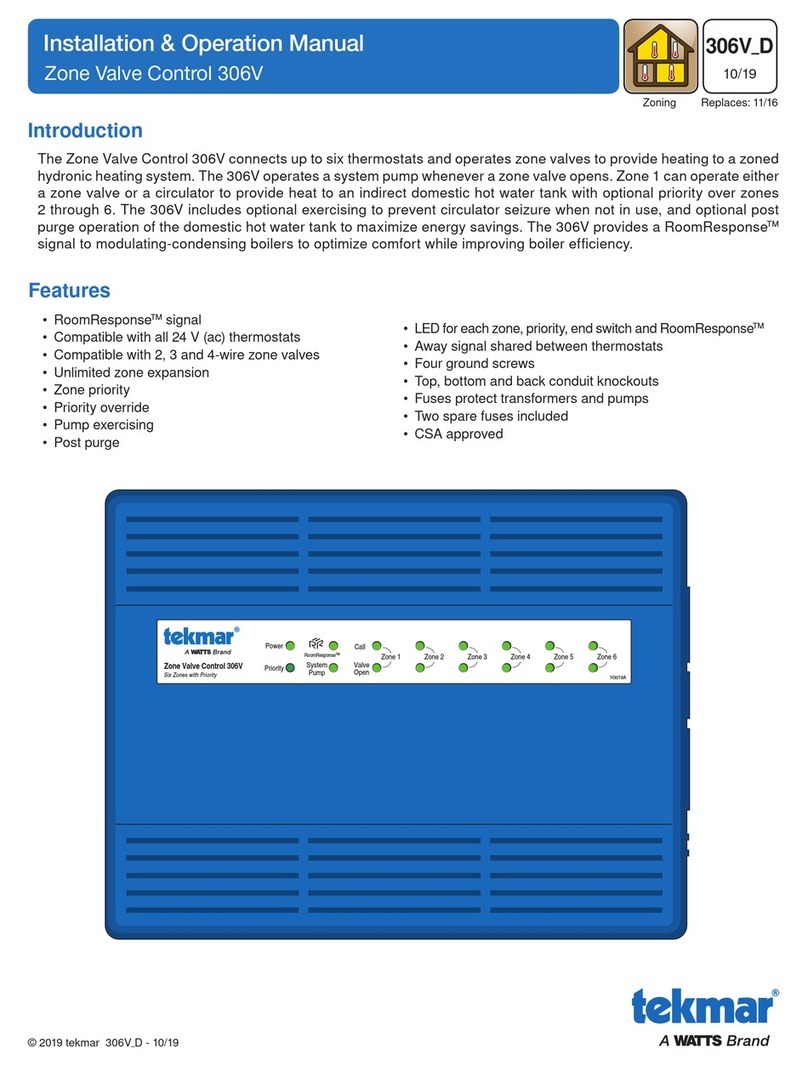
Watts
Watts tekmar 306V Installation & operation manual
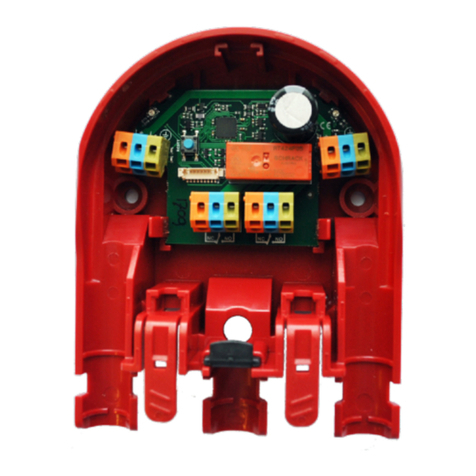
RCS AUDIO-SYSTEMS
RCS AUDIO-SYSTEMS VARES LOOP TRT-300A operating instructions
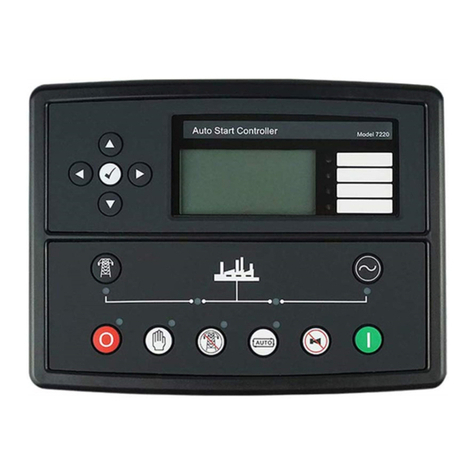
DEEP SEA ELECTRONICS
DEEP SEA ELECTRONICS DSECONTROL DSE7000 Series Operator's manual
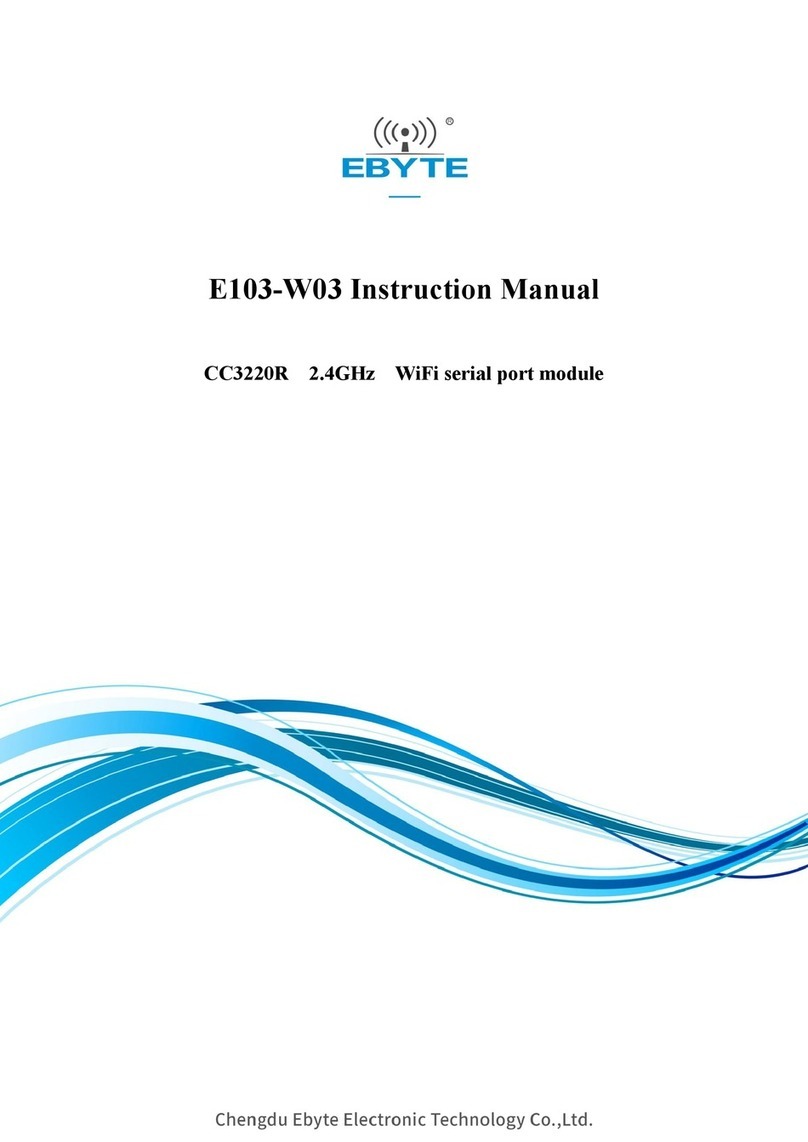
Ebyte
Ebyte E103-W03 instruction manual
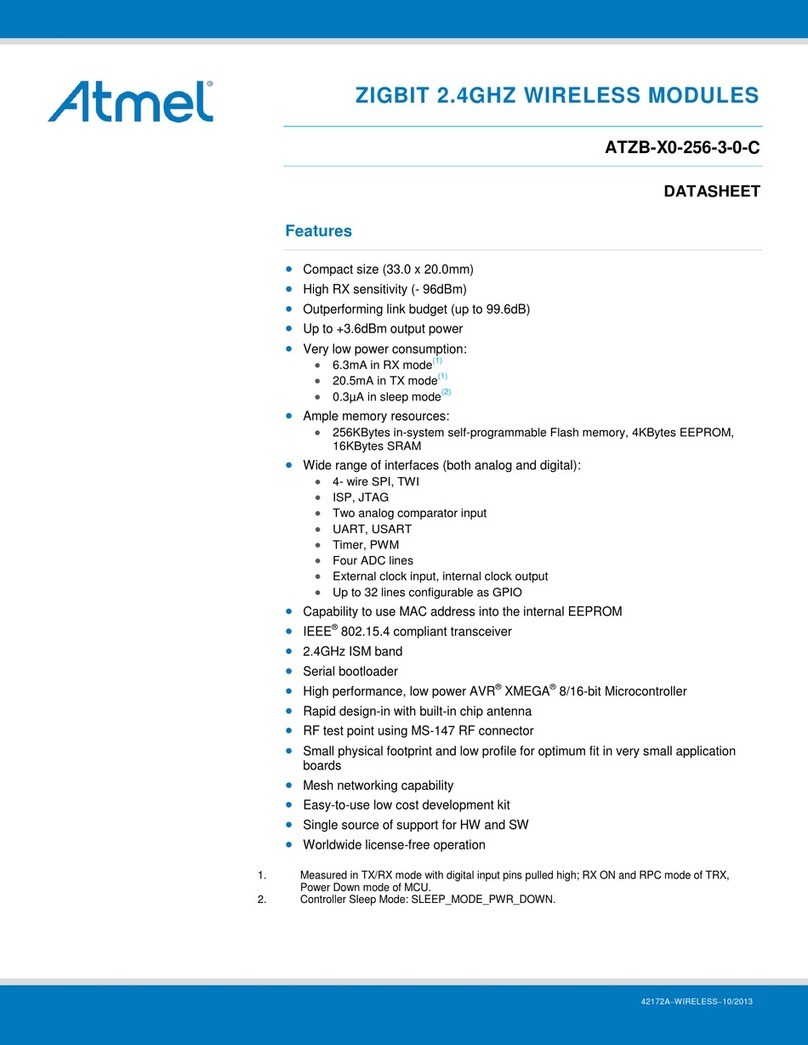
Atmel
Atmel ZIGBIT ATZB-X0-256-3-0-C datasheet
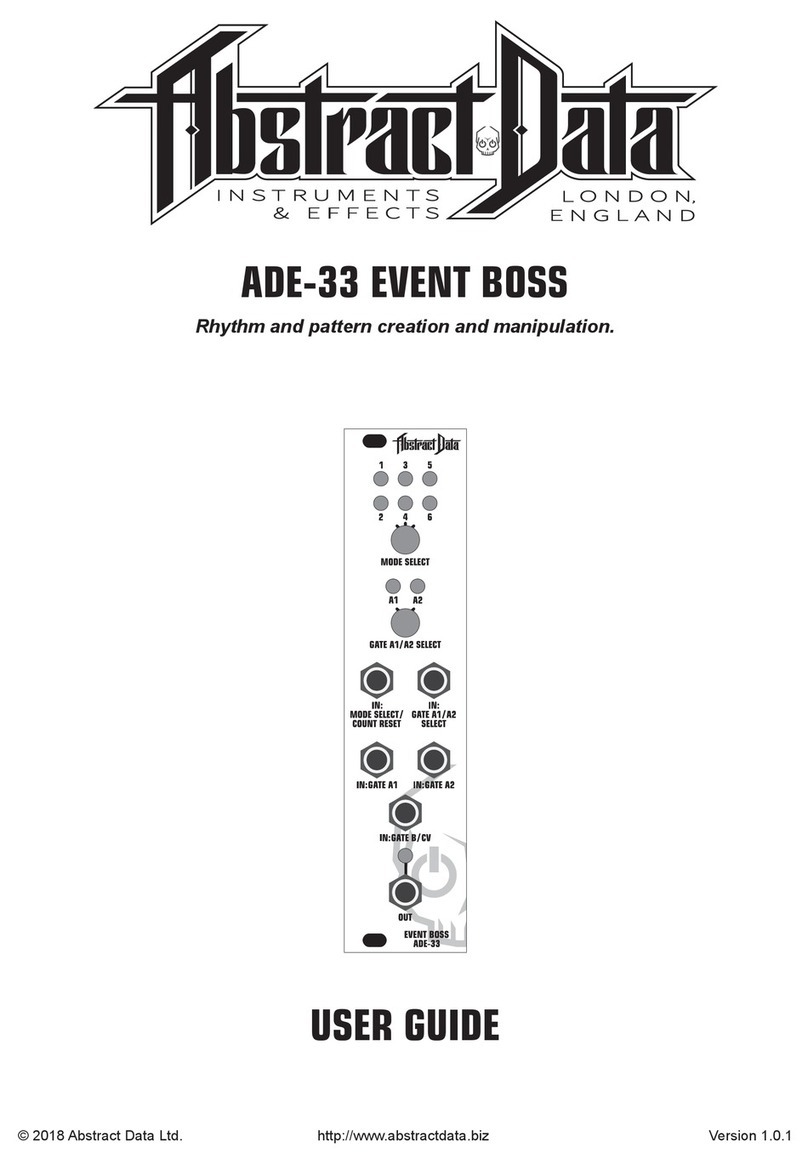
Abstract Data
Abstract Data Event Boss ADE-33 user guide

